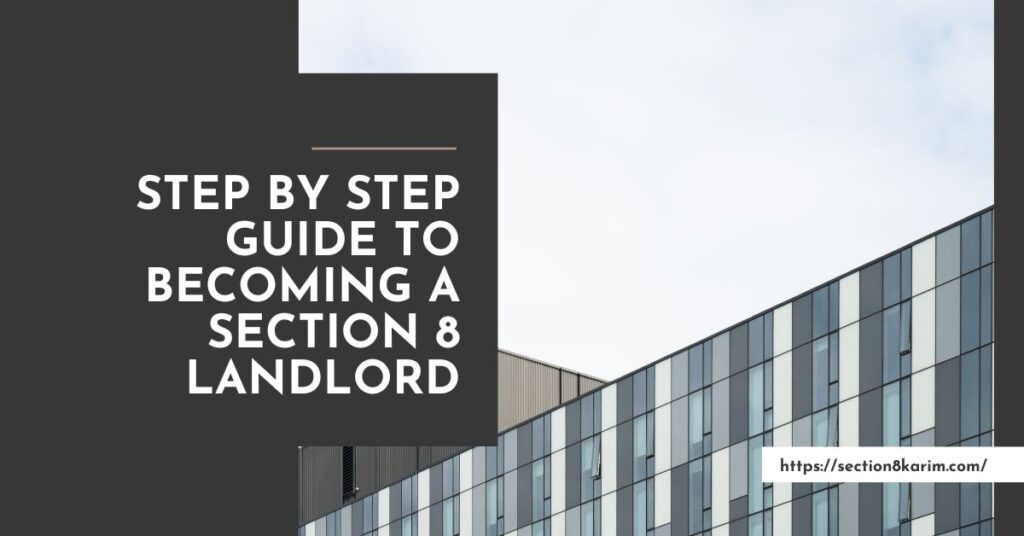Becoming a Section 8 landlord can be a rewarding experience, offering steady rental income while helping families find affordable housing. However, joining the Housing Choice Voucher Program involves a few essential steps and a bit of preparation. If you’re considering this path, this guide will walk you through the process in a straightforward and practical way.
Learn About the Section 8 Program
The first step is understanding how the Section 8 program works. Each state and local housing authority has its own set of rules, so it’s important to do your homework. Start by:
- Contacting Your Local Housing Authority: They’ll provide you with details on the application process and landlord responsibilities.
- Reviewing Program Basics: Understand the rent limits (Fair Market Rent) and property standards set by HUD.
- Getting Familiar with Tenant Eligibility: Know the type of tenants the program serves to set realistic expectations.
Get Your Property Ready
Your property needs to meet specific health and safety standards to qualify for the Section 8 program. Preparing it might require:
- Addressing Repairs: Fix leaky faucets, replace broken fixtures, and ensure everything is in working order.
- Ensuring Safety: Install functioning smoke detectors, secure handrails, and eliminate any hazards like exposed wiring.
- Creating a Welcoming Space: A clean, well-maintained property will attract quality tenants and pass inspections easily.
Register as a Section 8 Landlord
Once your property is ready, you’ll need to officially register with your local housing authority. The process usually involves:
- Filling Out an Application: Provide details about your property and agree to comply with program rules.
- Submitting Documentation: You may need to provide proof of ownership, property tax records, and other relevant paperwork.
- Waiting for Approval: The housing authority will review your application and may perform an initial property inspection.
Pass the Property Inspection
The inspection is a crucial part of becoming a Section 8 landlord. The housing authority will check to make sure your property meets HUD’s Housing Quality Standards. To prepare:
- Check All Systems: Ensure plumbing, heating, and electrical systems are functioning properly.
- Fix Small Details: Replace missing window screens, fix doors that don’t latch properly, and address any cosmetic issues that could raise concerns.
- Be Ready to Follow Up: If the inspector finds issues, make the necessary repairs promptly and schedule a re-inspection.
Advertise Your Property
Once your property is approved, it’s time to find tenants. Many Section 8 tenants search for housing through housing authority listings, but you can also:
- List Online: Use HUD-affiliated websites or other rental platforms that cater to Section 8 tenants.
- Highlight Key Features: Emphasize what makes your property appealing, like a convenient location or recent upgrades.
- Network Locally: Let your housing authority know you have a unit available, as they often help connect landlords with tenants.
Screen Tenants
Even though Section 8 tenants are pre-screened by the housing authority, you should still do your own due diligence. This might include:
- Checking References: Speak with previous landlords to understand the tenant’s rental history.
- Discussing Expectations: Make sure the tenant understands your house rules and their responsibilities.
- Evaluating Fit: Ensure the tenant’s needs align with what your property offers.
Sign a Lease Agreement
When you’ve found the right tenant, it’s time to finalize the lease. Here’s what to keep in mind:
- Use an Approved Lease: Your lease agreement should meet both HUD and local housing authority requirements.
- Clarify Terms: Include details about rent payments, maintenance responsibilities, and any specific house rules.
- Coordinate with the Housing Authority: Provide them with a copy of the lease for review and approval.
Start Receiving Payments
Once the lease is in place, you’ll begin receiving payments from the housing authority. To ensure a smooth process:
- Track Payments: Regularly monitor your accounts to ensure payments are accurate and on time.
- Communicate with Tenants: Build a good relationship by addressing concerns and maintaining open communication.
- Stay Compliant: Keep your property in good condition to meet ongoing inspection requirements.
Manage Renewals and Inspections
At the end of each lease term, you’ll need to decide whether to renew the lease. This often involves:
- Conducting Inspections: Ensure your property is in compliance with HUD standards for renewal.
- Discussing Terms with Tenants: Talk to your tenant about their plans and confirm their continued eligibility.
- Filing Renewal Paperwork: Work with your housing authority to update any necessary documents.
Read Also: What is Section 8 Housing and How Does It Work?
Conclusion:
Becoming a Section 8 landlord is a step-by-step process, but the rewards can be well worth the effort. You can learn about Section 8 training to gain the knowledge and skills needed for success. By offering affordable housing, you’re not only creating a reliable income stream but also making a positive impact in your community. With preparation, attention to detail, and a commitment to maintaining high standards, you can succeed as a Section 8 landlord and enjoy the benefits of this rewarding investment strategy.

